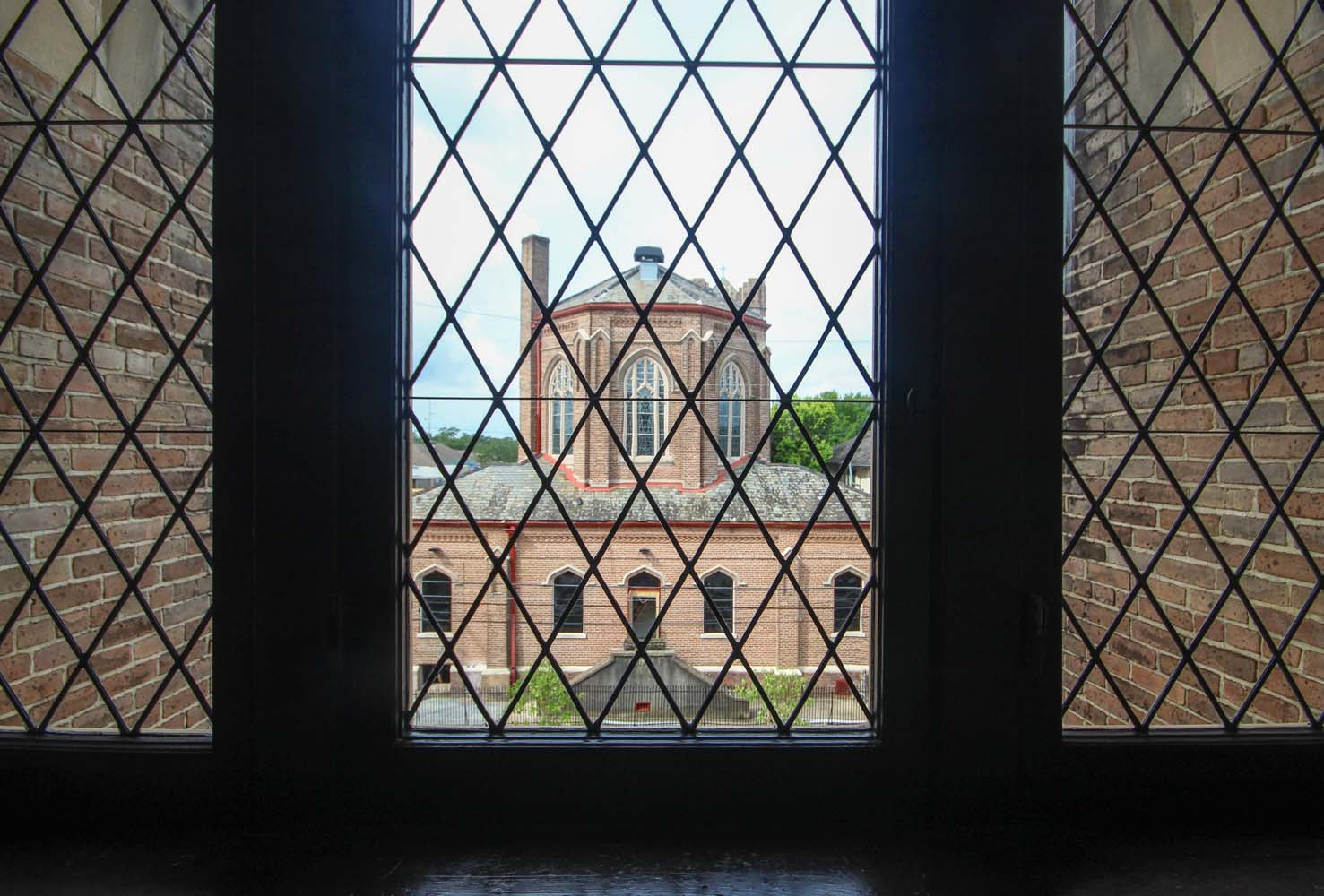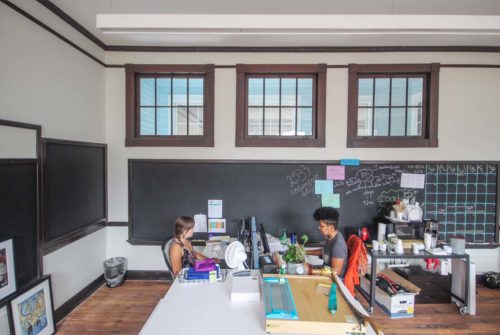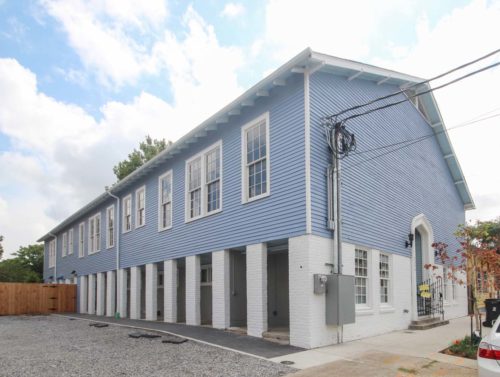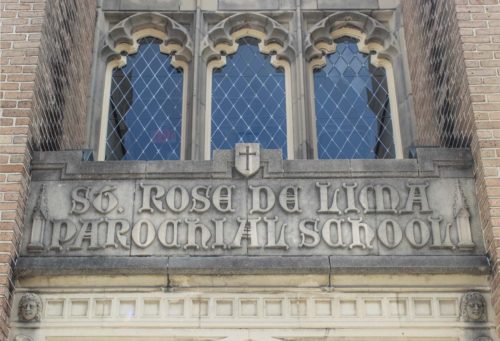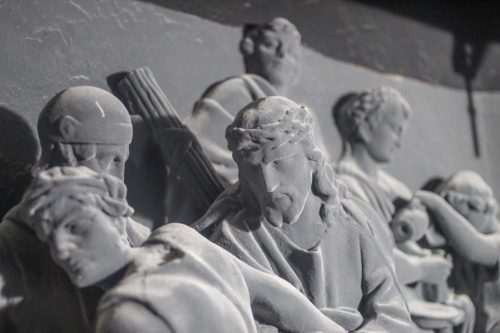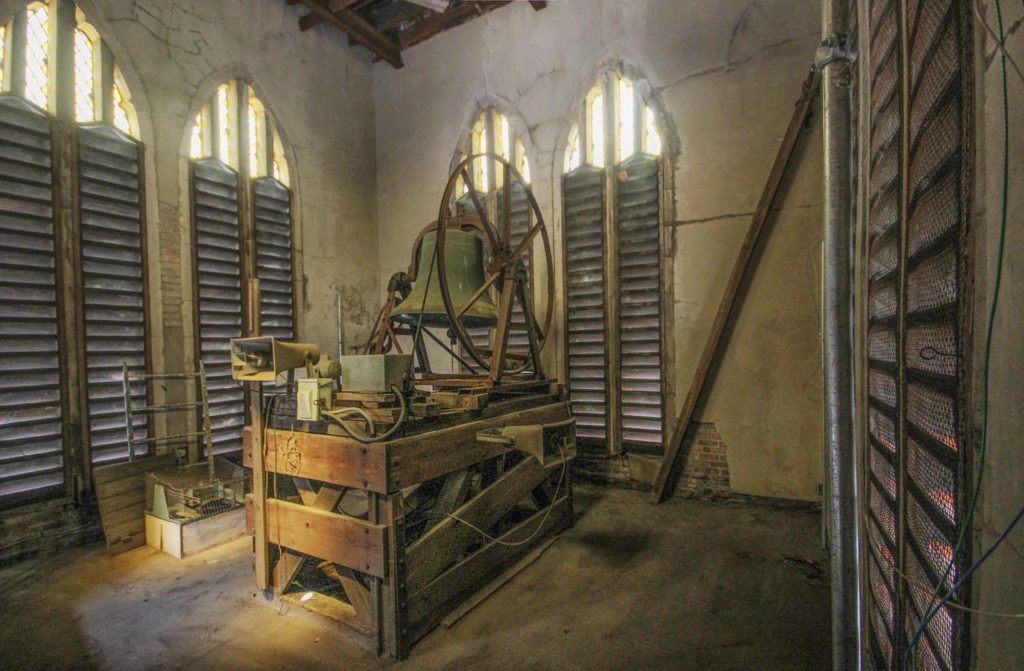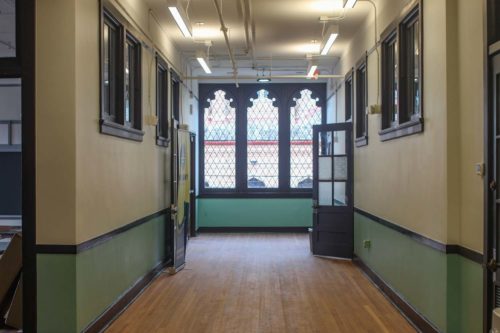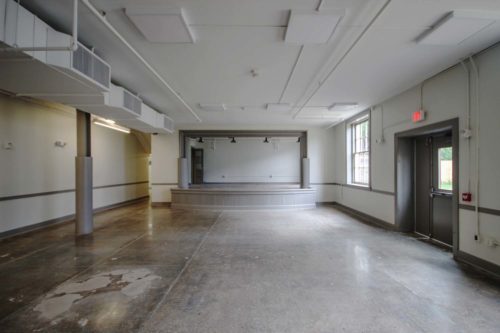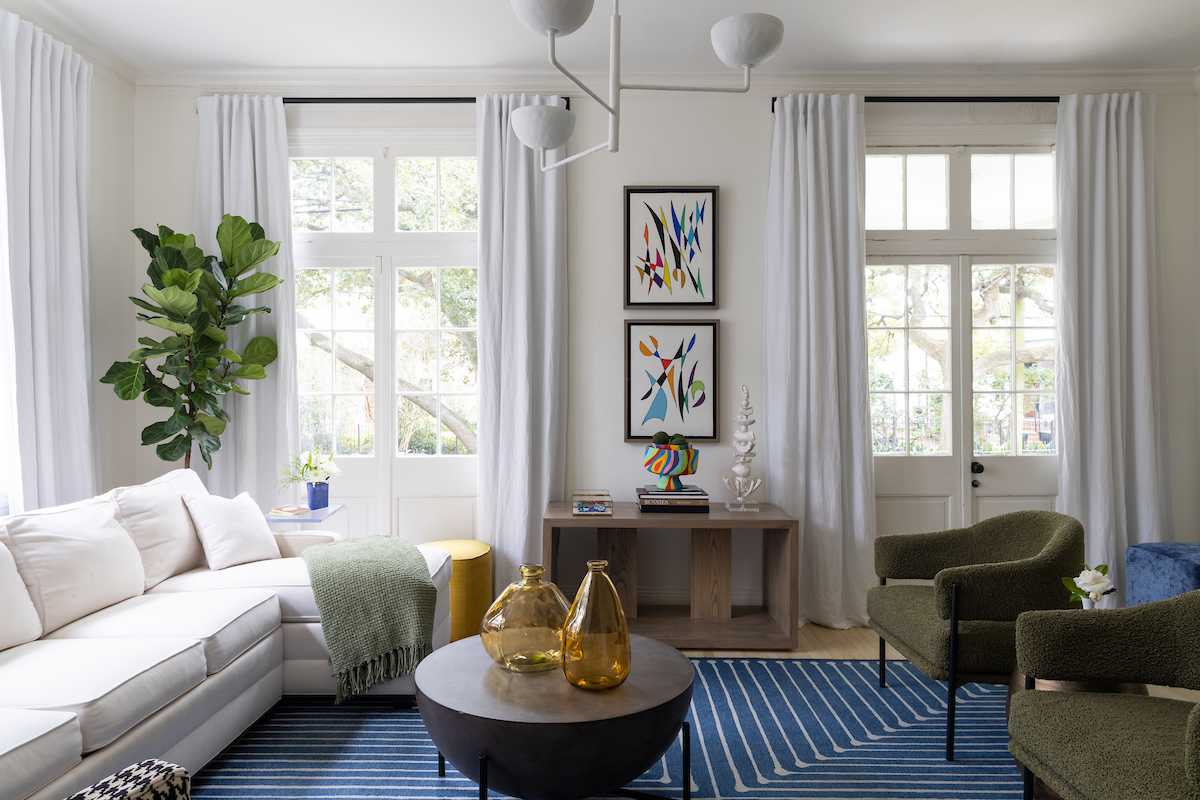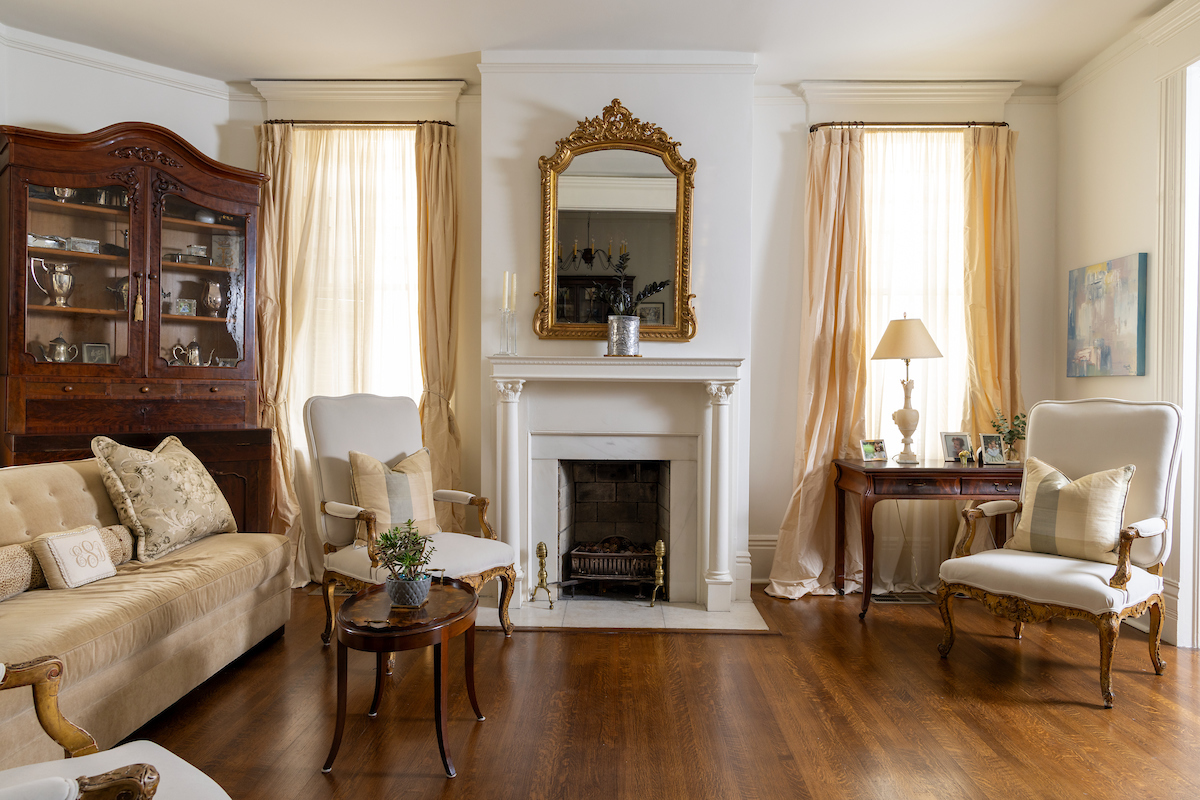This story first appeared in the September issue of the PRC’s Preservation in Print magazine. Interested in getting more preservation stories like this delivered to your door each month? Become a member of the PRC for a subscription!
Bells will ring anew anew from the tower at St. Rose de Lima when the Southern Rep Theatre takes up residence in the historic Bayou Road church come October.
The restoration of the church and its two school buildings, begun in 2017, reaches its conclusion next month with a ribbon-cutting slated for early October, followed by the opening night of Southern Rep’s 2018-2019 season on Oct. 8. Although the resurrection of the church building and its former school buildings on Columbus Street has taken less than 19 months, the remaking of the buildings into the Bayou Treme Arts and Education Center was years in the making.
It was the late Hal Brown and his wife Shawn Kennedy of the Rose Community Development Corporation (Rose CDC) who first devised a plan to acquire the property from the archdiocese after the church was shuttered following Hurricane Katrina, said Jonathan Leit, director of Alembic Community Development’s New Orleans office.
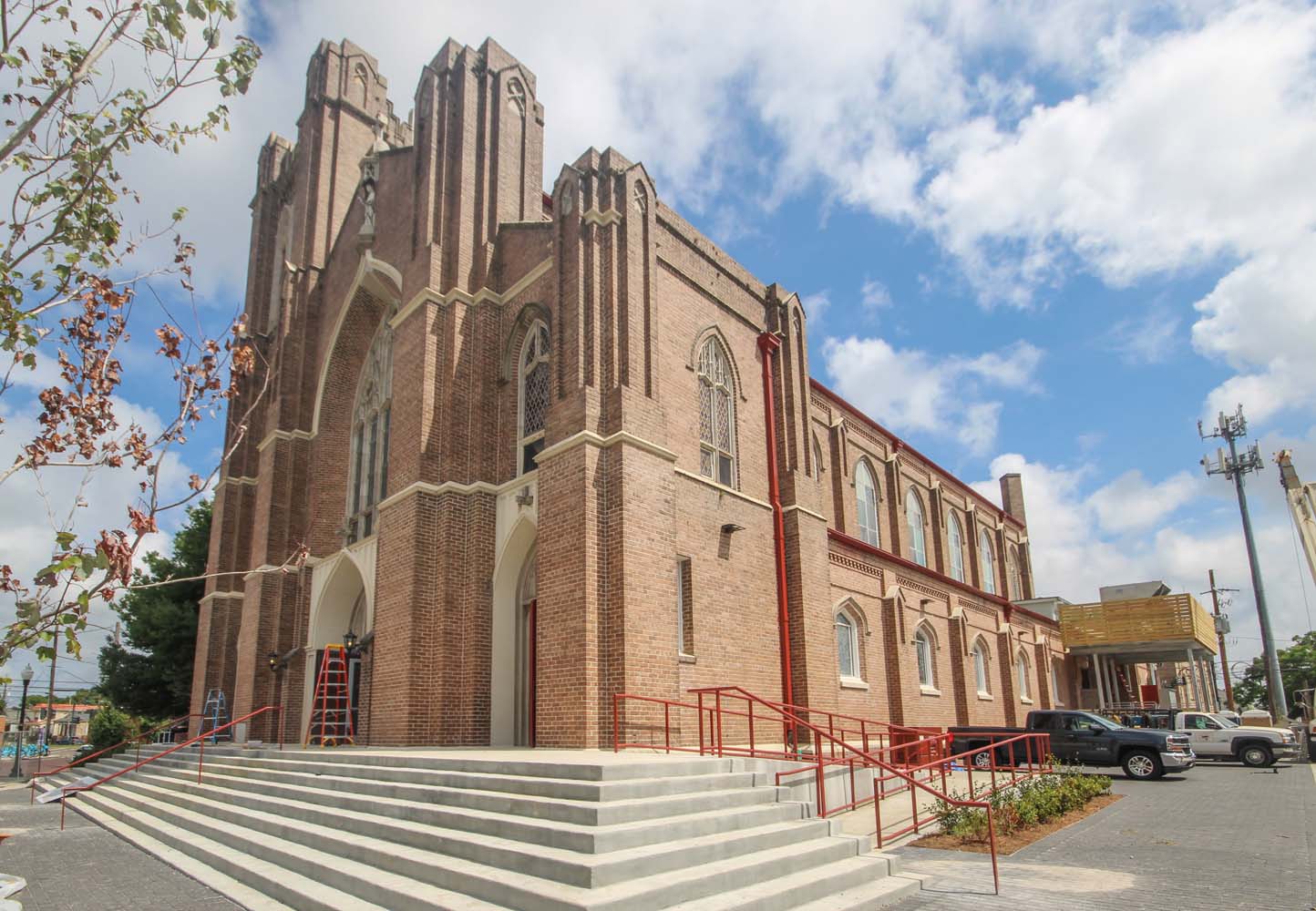
Photos by Liz Jurey
Alembic and Rose CDC now are partners and co-owners of the property, and Metro Studio is the architect of record on the project.
“Hal was an amazing guy,” Leit said. “He had a great vision, and we are so fortunate to have the opportunity to work with Shawn and Rose CDC to bring it to fruition.”
The church was built in 1915, designed by Paul Andry and Arthur Feitel to replace a wooden church that burned in 1913. For almost a hundred years, the Gothic style church served not only as the spiritual heartbeat of the community, but also as an anchor for the commercial entities that clustered around the intersection of Bayou Road and N. Broad Street.
Encompassing 13,400 square feet, the renovated church now holds a main stage theater with seats for 125, a smaller performance space that can seat 65, and a third space in what was formerly the choir loft. Across Columbus Street from the rear of the church are the original three-story school building (23,000 square feet) and a second school building known as the annex (10,500 square feet), both designed by Andry and Feitel — the school in 1925 and the annex in 1938. The Southeastern Architectural Archive at Tulane University holds the original plans for the compound. Now, the three-story building will be the future home to the Waldorf School, while the annex houses offices for nonprofit groups.
“It may sound surprising but the buildings were in great shape structurally when we got hold of them, even though they were vacant for nearly a decade,” said Mike Grote, Alembic’s director of building programs in New Orleans. “The church was built with steel framing for the walls so it was plenty sturdy.”
The biggest challenge, Leit said, was to find a use for the church that was compatible with its design and that would serve as a catalyst for the life of the community.
“We knew that Southern Rep had been looking for a permanent home and that they had considered the church a couple of times before Alembic became involved. We thought they would be an ideal tenant,” he said.
Aimée Hayes, Southern Rep’s artistic director, said that previous ideas to house the company in the church had been based on the concept of the theater group sharing the space with other entities.
“The third time was the charm,” she said. “We are a professional theater and have lots of programming even when we don’t have a main stage production. So when Alembic proposed that we occupy the space as the sole tenant, we were thrilled.”
Advertisement
Best known for its main stage productions, Southern Rep also sponsors camps and activities for school children. “Because we have been all over town without a real headquarters, I think it’s been hard for people to grasp the totality of what we do,” Hayes said. “Now we’ll have a central location for most of it, and we’ll be able to use the space to devise new programs that will be highly interactive with the community.”
Although other churches locally have been turned into theaters, performance spaces and event venues, the Southern Rep facility manages to retain the church’s soaring ceilings, columns, Stations of the Cross and choir loft while providing a state-of-the-art professional theater.
“We basically inserted a box with a top on it into the interior of the church,” Grote said. “We wanted to leave the church structure intact, so we fit it in very carefully without touching the walls or columns. The Stations of the Cross remain, painted the same as the wall colors, and all the stained glass is intact. There were all sorts of acoustical and electrical challenges to solve to make it work, but now the Rep will have a contemporary facility that can be reconfigured depending on the production needs of the play.”
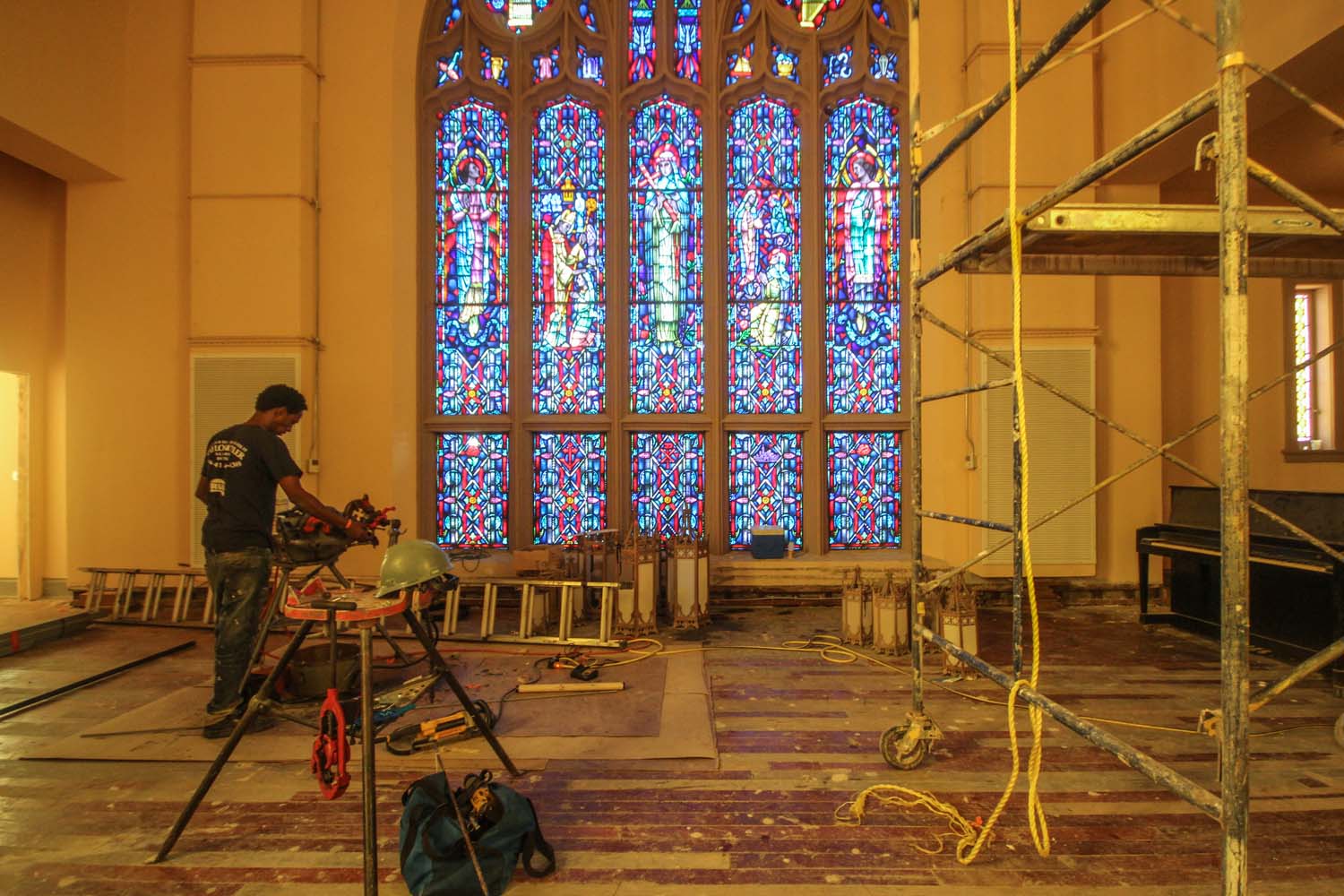
The Lagniappe Stage will occupy the church vestibule and lobby, where the Sanctuary Bar will serve drinks on nights of performances. Hayes likens the space to a “hybrid of the Mid-City Theater and Le Chat Noir,” referring to now defunct popular venues with cabaret style seating.
“This is how an evening at the Southern Rep will go,” Hayes said. “If you arrive at 6:15, you’ll get here in time for a live performance on the plaza in front of the church. The bells will ring summoning you into the play and at intermission, you can visit the Sanctuary Bar in the lobby. After the play is over, you can stay for a late night performance outside. The performances on the plaza are free, so the public can attend them.”
Grote said dozens of people have walked by or contacted him since construction began on the church and school buildings in the spring of 2017 to tell him about their families’ longtime connection with the parish church. “So many people stop by and say, ‘I was baptized here,’ or ‘My parents were married here,’ ” Grote said. “In fact, Ryan Gootee, our general contractor for the project, told me his grandparents were married in the church and that his father and siblings were baptized and had their first communion at St Rose. This place has meant so much to the community.”
Father Maistre’s Legacy
The church was founded in 1857, when the Rev. Claude Paschal Maistre of Troyes, France, became the parish priest. At that time, Father Maistre ministered to a racially diverse parish that included whites and free people of color. Despite the pro-Confederate stance of the local church leaders, Maistre preached emancipation of slaves and true equal rights for all. He was rebuked for his teachings and was forbidden from holding a church funeral for André Cailloux, a free man of color and St. Rose parishioner who fought with the Union at the siege of Port Hudson and became a national hero. In defiance, Maistre held the service outside the church and then led the mile-long procession — attended by thousands — to St. Louis Cemetery No. 2, where Cailloux was buried.
“From speaking with community members, you get the feeling that there’s an aura about this place that derives from the human rights philosophy of Maistre and the bravery of André Cailloux,” said Mike Grote of Alembic.
Advertisement



